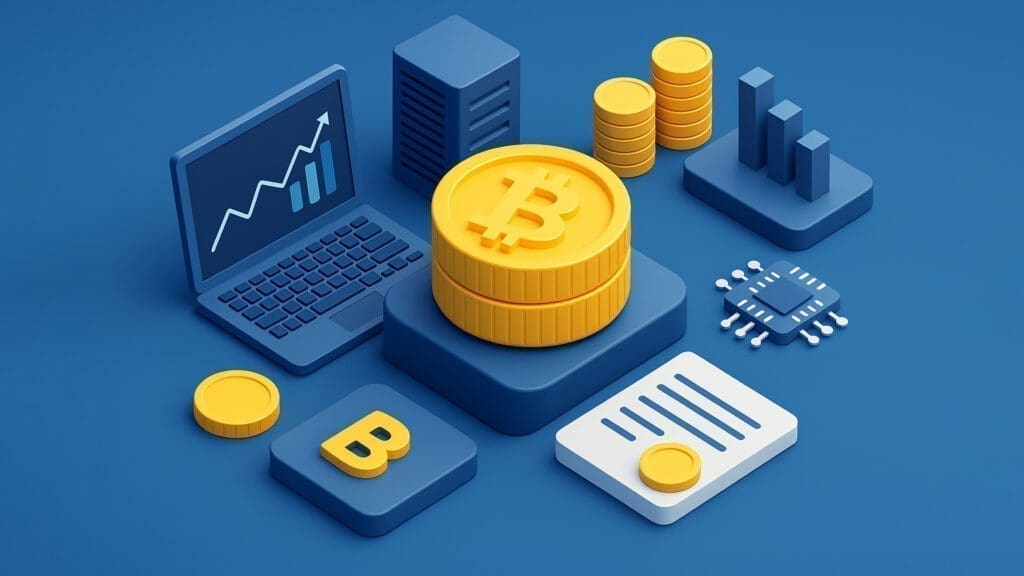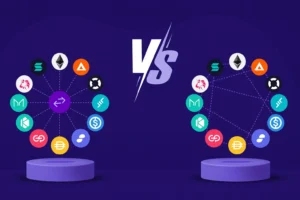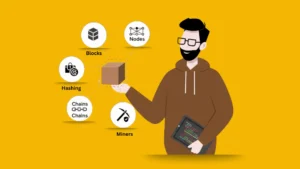
Cryptocurrency is becoming a game-changer for businesses, investors, and developers. As blockchain technology grows, many people want to create their own digital coins. Whether you’re thinking of launching a coin for your business or building a new platform, it’s important to understand how crypto coin development works. In this simple guide, we will explain the process of creating a cryptocurrency, from the idea to the launch. By the end, you’ll know how to develop your own crypto coin and begin your journey in the blockchain world.
What is Crypto Coin Development?
At its core, Crypto coin development is the process of creating a new digital currency, also known as a cryptocurrency. Unlike tokens, which are built on top of existing blockchain platforms, coins operate on their own independent blockchain network. Coins like Bitcoin (BTC) and Ethereum (ETH) are classic examples of cryptocurrencies that run on their own Native blockchains.
The process of creating a cryptocurrency involves several key steps, including Blockchain development, coin design, and launching the coin on the blockchain. By choosing the right platform, and consensus mechanism, and designing a tokenomics model that suits your needs, you can ensure that your cryptocurrency is scalable, secure, and ready for adoption.
Why Develop Your Own Cryptocurrency?
Developing a cryptocurrency can serve multiple purposes, depending on the goals you want to achieve. It might be for:
- Payment Systems: Creating a coin for fast and secure transactions, similar to how Bitcoin and Litecoin work.
- Ecosystem Integration: Your coin could serve as a utility token within a Decentralized application (DApp) ecosystem, providing access to services.
- Investment Vehicle: You might wish to create a new digital asset for investors, offering a unique value proposition that appeals to crypto enthusiasts.
- Decentralized Governance: If you’re thinking of creating a Decentralized Autonomous Organization (DAO), your cryptocurrency coin could serve as a governance token to allow users to vote on important protocol changes.
Step-by-Step Process to Create Your Own Cryptocurrency
-
Conceptualize and Define the Purpose
The first step in the token development solutions process is understanding the purpose of your cryptocurrency. Whether you plan to create a coin for payments, a utility coin for your ecosystem, or a governance token to run a decentralized community, defining the use case is critical. Clear goals for your crypto coin will help guide every other decision in the development process. Consider:
- The problem your coin will solve.
- Who your target audience is.
- The benefits your coin will provide to users.
-
Select the Blockchain Platform
Deciding whether you want to create a coin on an existing blockchain or develop an entirely new blockchain is a significant decision.
- Building on an Existing Blockchain: Platforms like Ethereum, Binance Smart Chain, and Polkadot are popular choices. These platforms allow developers to issue coins or tokens without building a blockchain from scratch. Ethereum, for instance, offers robust smart contract capabilities, which could be beneficial if your coin needs to interact with decentralized applications (DApps).
- Creating a New Blockchain: If you want complete control over the network, governance, and features, building a new blockchain from scratch is a more complex but rewarding option. This requires designing your own consensus mechanism, node structure, and transaction rules. It’s best suited for businesses that need more customization.
-
Choose the Consensus Mechanism
The consensus mechanism is the heart of any blockchain. It determines how transactions are validated and added to the blockchain. Popular consensus mechanisms include:
- Proof of Work (PoW): Used by Bitcoin, this mechanism requires miners to solve complex computational puzzles to add transactions to the blockchain. It’s energy-intensive but offers high security.
- Proof of Stake (PoS): In PoS, validators are selected based on the number of coins they hold and are willing to stake as collateral. This mechanism is more energy-efficient and is used by Ethereum 2.0.
- Delegated Proof of Stake (DPoS): This involves electing delegates to validate transactions, reducing centralization and speeding up transaction times. EOS uses DPoS.
-
Design Your Coin’s Features and Tokenomics
One of the most important aspects of Coin development services is tokenomics—the study of how your coin will function within its ecosystem. Tokenomics includes aspects like:
- Supply: How many coins will exist in total? Will the supply be capped (like Bitcoin’s 21 million)?
- Distribution: How will the coins be distributed? Will you hold an Initial Coin Offering (ICO), airdrop, or private sale? Your distribution model must align with your goals and be fair to your community.
- Rewards: Will your cryptocurrency offer staking rewards, mining rewards, or other incentives for users to hold or participate in your network?
-
Develop the Coin and Smart Contracts
Once the conceptual work is complete, the next step is to start building. Depending on your approach, this might involve:
- Building a New Blockchain: This is the most technical step, as you’ll need to code your blockchain, set up nodes, define transaction protocols, and more.
- Creating a Coin on an Existing Blockchain: If you’re using a platform like Ethereum or BSC, you’ll need to write a smart contract in a language like Solidity (for Ethereum). The smart contract will define your coin’s functionality, including features like transferability, total supply, and more.
-
Perform Thorough Testing
Before launching your cryptocurrency on the mainnet, thorough testing is a must. Test your blockchain or coin under various scenarios to ensure there are no security vulnerabilities, and ensure that transactions process smoothly. Testing should focus on:
- Security: Ensure your network is secure against potential attacks like 51% attacks or Sybil attacks.
- Performance: Check if your blockchain can handle a high number of transactions without slowing down.
- Scalability: Test the system’s ability to scale as more users join and as transaction volumes increase.
-
Launch and Market Your Coin
Now that your coin is developed and tested, it’s time to launch. You can launch your coin on the mainnet, but before doing so, it’s crucial to have a marketing plan in place to ensure that your project gains traction. Key steps include:
- ICO/Token Sale: Raise funds through an ICO or token sale if needed.
- Listing on Exchanges: Get your coin listed on exchanges, both centralized (CEX) and decentralized (DEX), to make it accessible to users.
- Community Building: Engage with potential users through social media platforms like Twitter, Telegram, Reddit, and Discord. Active community engagement helps build trust and encourages adoption.
-
Post-Launch Updates and Maintenance
Launching your cryptocurrency is only the beginning. Ongoing updates, security patches, and user engagement are crucial to ensuring the long-term success of your coin. Regular updates and improvements based on feedback from your community will help keep the coin relevant and functional.
Turn Your Crypto Vision into Reality!
Creating your own cryptocurrency is an exciting opportunity that can provide long-term rewards. Whether you aim to create a coin for payments, a utility token for your decentralized app, or a governance coin for a DAO, understanding the Crypto coin development process is key to achieving success.
With careful planning, the right Coin development solutions, and a focus on security, scalability, and usability, you can create a digital asset that stands out in the crowded crypto space. By collaborating with a professional Coin development company, you can make the entire process smoother and more efficient, ensuring that your coin gets the best possible start in the market. If you’re ready to start your Cryptocurrency development journey, consider partnering with an experienced team to help bring your vision to life. With the right strategy and execution, your cryptocurrency could be the next big thing in the digital asset space.





